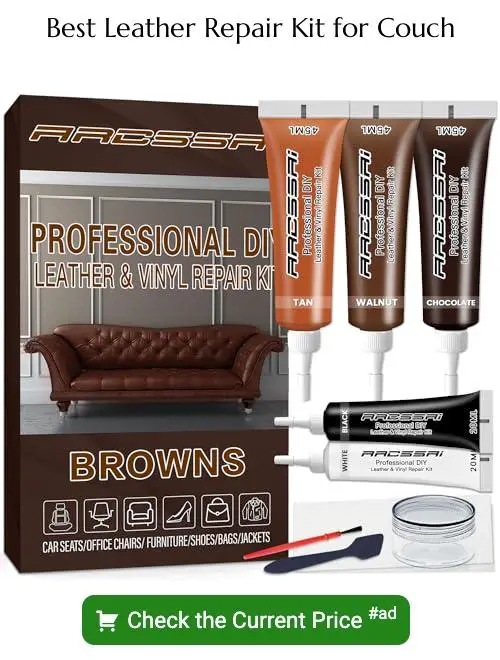Last updated on
Discover the essential steps to effectively repair your faux leather couch and restore its charm in this comprehensive guide.
A fake leather couch may look great in your living room, but it can be a nightmare to maintain. Over time, the material can start to crack and peel, leaving unsightly blemishes on your once-pristine piece of furniture.
But don’t despair – repairing a fake leather couch is easier than you might think. In this article, we’ll walk you through the steps to get your couch looking like new again.
So grab some supplies and let’s get started!
Table of Contents
Identify Fake Leather Couch Damage
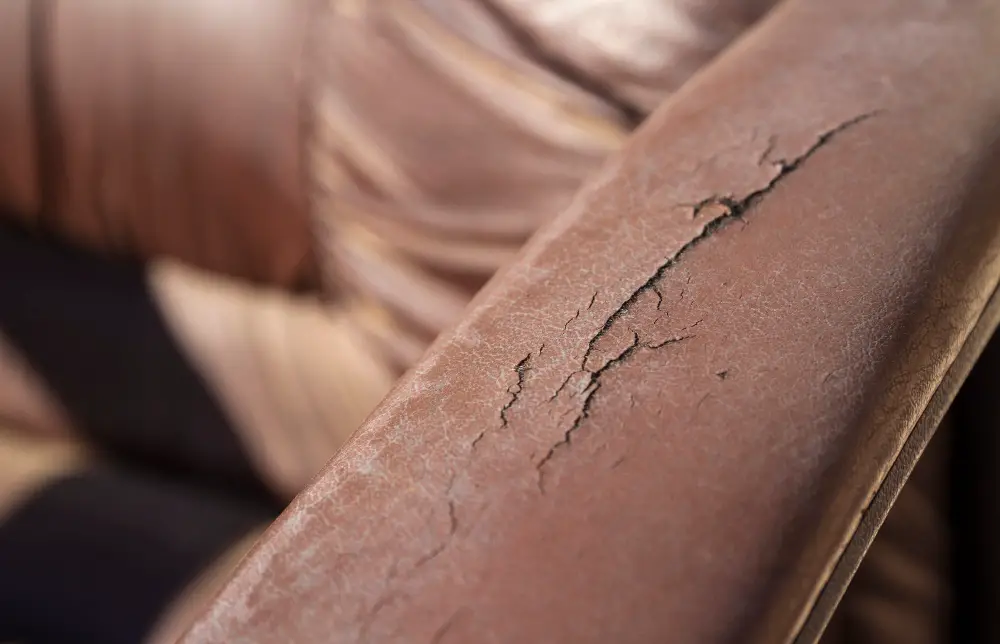
The first step in repairing your fake leather couch is to identify the type of damage it has sustained. This will help you determine the best course of action for fixing it.
Some common types of damage include scratches, peeling or flaking, tears and holes.
Scratches are usually caused by pets or sharp objects like keys and can be easily repaired with a few simple steps. Peeling or flaking occurs when the top layer of faux leather starts to come off due to wear and tear over time.
Tears and holes can happen from accidents such as moving furniture around.
Assessing the Damage
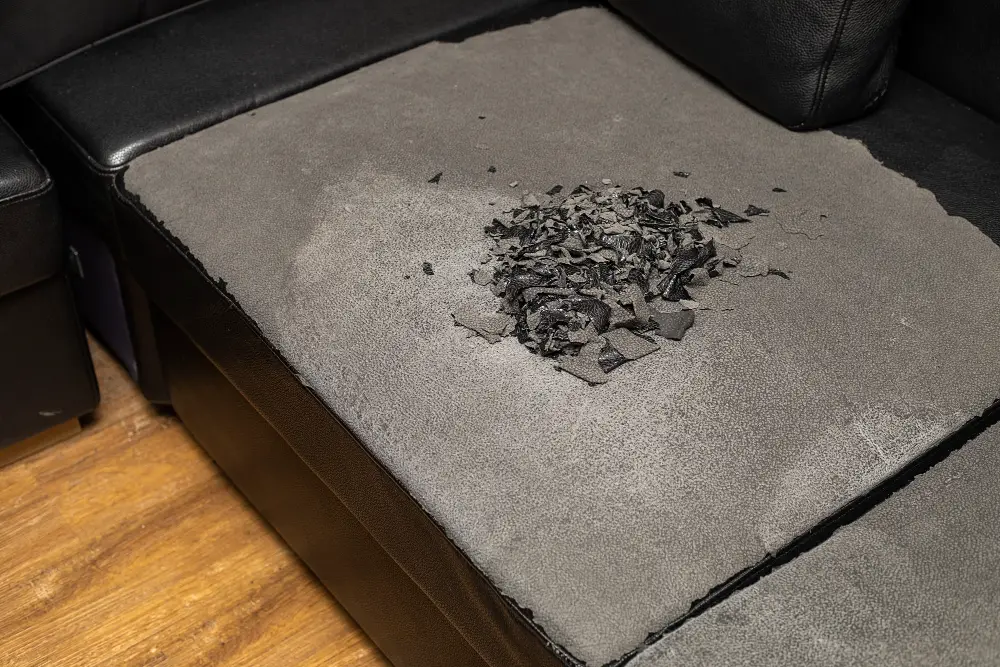
This will help you determine the extent of the repairs needed and what tools and materials you’ll need to complete them.
Start by examining your couch carefully, looking for any signs of cracking, peeling or flaking on its surface. Check for tears or holes that may require patching as well.
Once you’ve identified all areas that need repair, take note of their size and location. Small scratches can be easily fixed with a simple touch-up kit while larger rips may require more extensive work using filler material.
Assessing the damage upfront will also give you an idea if it’s worth fixing yourself or if it’s better left to professionals who have experience working with faux leather furniture. Remember that some damages are beyond repair so knowing when it’s time to replace your sofa is important too.
Gather Required Repair Tools

Having all of your supplies on hand before starting will make the process smoother and more efficient.
Here are some essential tools you’ll need:
- Sandpaper (fine-grit)
- Clean cloth
- Vinyl repair kit
- Leather filler compound
- Paintbrushes (small and medium-sized)
- Interior latex paint in a matching color or acrylic leather dye
- Note: If using interior latex paint, choose one with a satin finish.
- You may also want to consider purchasing additional items such as gloves, masking tape, and plastic wrap depending on which method of repair you choose.
It’s important to note that not all methods require every tool listed above. For example, repairing small scratches may only require sandpaper and a clean cloth while fixing peeling or flaking would involve using interior latex paint or an acrylic leather dye.
Clean the Couch Surface
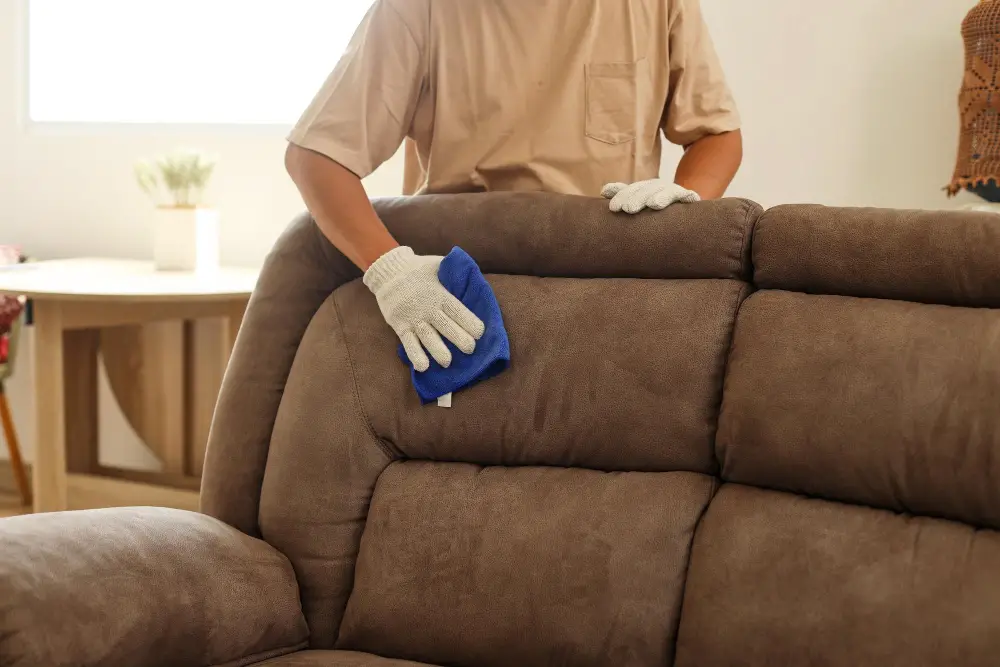
Dirt and grime can accumulate on the surface of your couch over time, making it difficult for repair materials to adhere properly. To clean the surface of your faux leather couch, start by vacuuming up any loose dirt or debris using a soft brush attachment.
Next, mix a solution of warm water and mild soap in a bowl or bucket. Dip a soft cloth into the soapy water and wring out excess moisture until it’s damp but not dripping wet.
Gently wipe down all surfaces of your fake leather sofa with this cloth.
Be sure to pay extra attention to areas that are particularly dirty or stained – these may require additional cleaning efforts such as spot-cleaning with an appropriate cleaner recommended for use on synthetic leathers.
Once you’ve finished cleaning all surfaces thoroughly, allow them to air dry completely before moving onto preparing damaged areas for repair (as outlined in our next section).
Prepare the Damaged Area
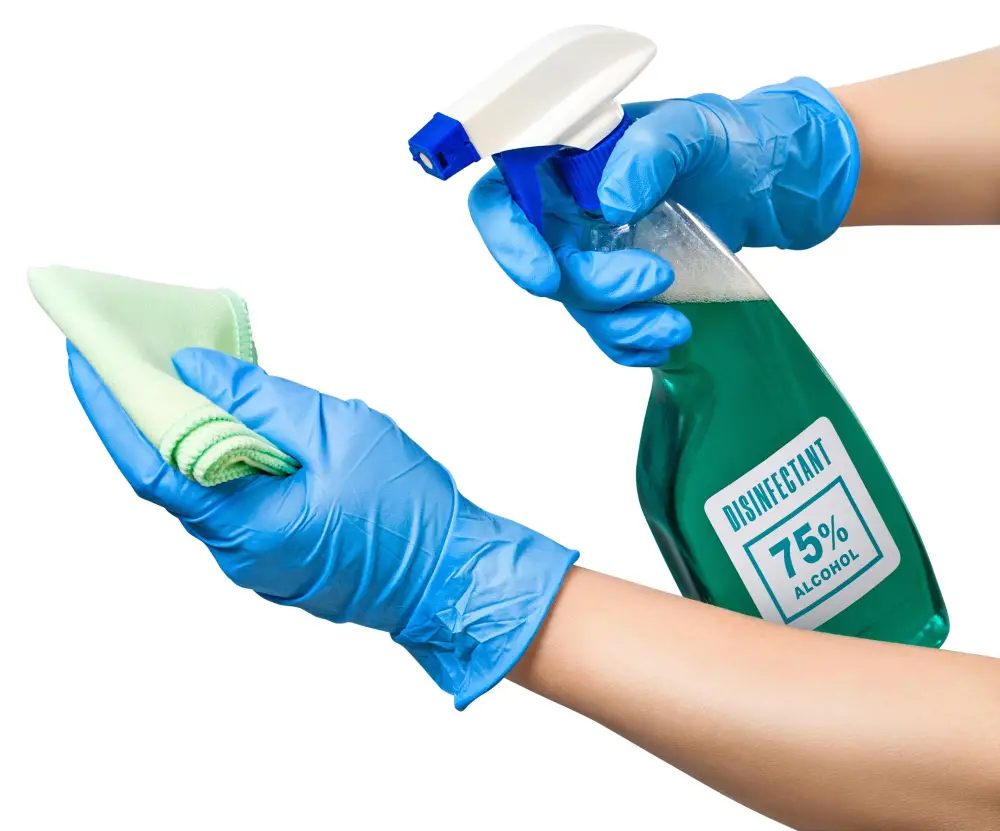
This step is crucial because it ensures that the repair will be smooth and seamless.
Start by cleaning the damaged area with a mild soap and water solution or rubbing alcohol. Use a soft cloth or sponge to gently scrub away any dirt, grime, or oils that may have accumulated on the surface of your couch.
Next, use sandpaper (220 grit) to lightly sand down any rough edges around tears and holes in order for them not to catch on clothing when sitting down.
Wipe off all dust particles from sanding using a clean damp cloth before proceeding with repairs.
Choose the Right Repair Method
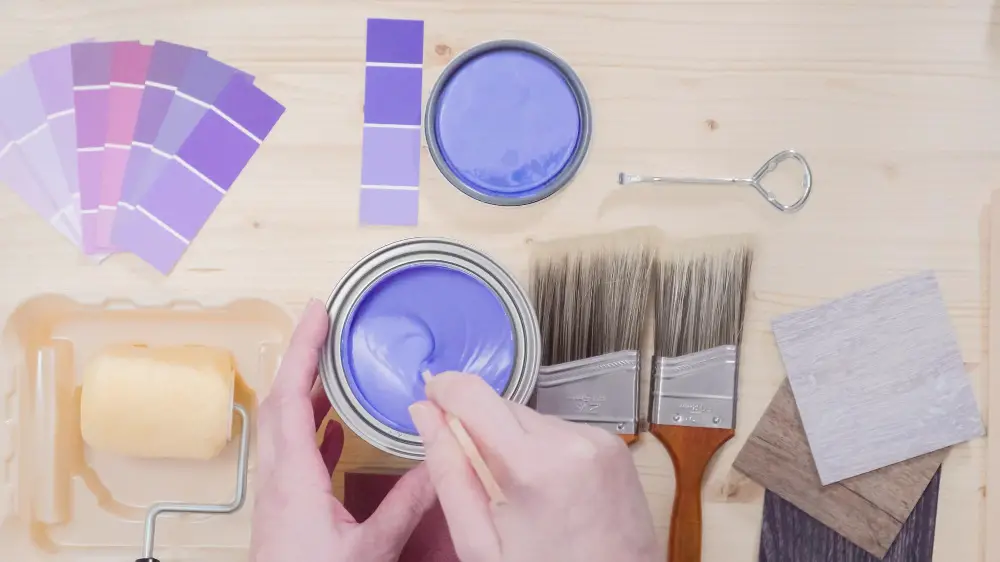
The approach you take will depend on the type and extent of damage. For small scratches or scuffs, a simple touch-up may be all that’s needed.
However, for more significant issues like peeling or tears in the material, a more involved repair process is necessary.
One option for repairing peeling or flaking areas is using interior latex paint that matches your couch color as closely as possible. This method can help conceal any unsightly blemishes and restore uniformity to your furniture piece.
Another alternative involves using vinyl repair kits specifically designed for faux leather surfaces with peeled-off layers of polyurethane coating (PU). These kits come with everything you need to fix minor damages such as cracks and holes in PU-coated synthetic leathers.
For larger rips or tears in faux leather upholstery fabric without PU coatings (e.g., PVC), consider filling them up with an appropriate amount of liquid filler before sealing them off completely by applying heat from an iron box over wax paper placed on top until melted together again seamlessly!
Repairing Small Scratches
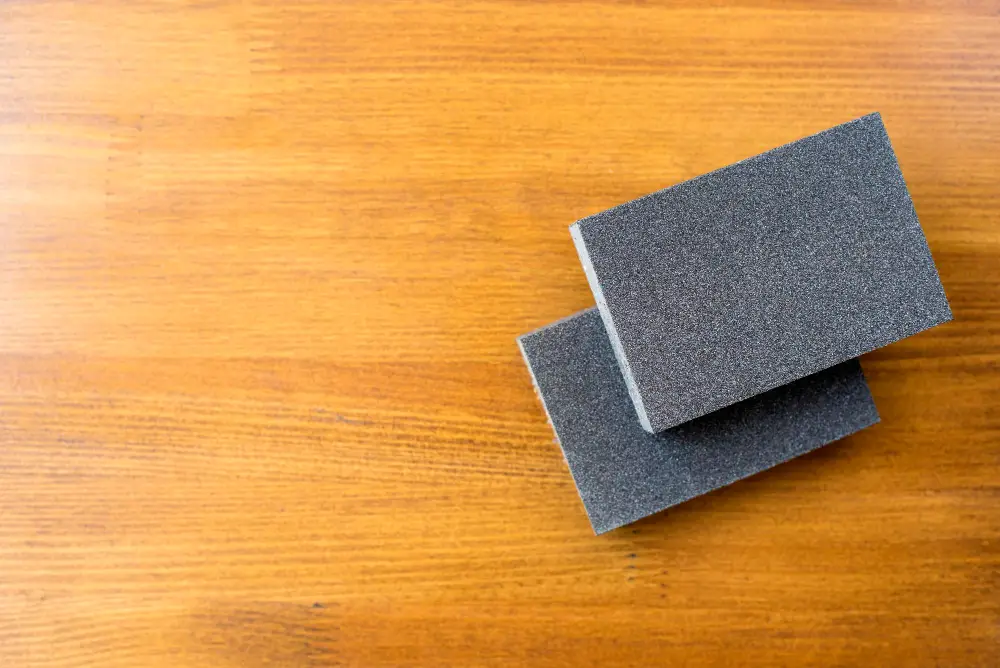
First, clean the surface of the couch thoroughly to remove any dirt or debris that may be in the scratch. Then, use a fine-grit sandpaper to gently buff out the scratch until it is smooth and even with the surrounding area.
Next, apply a small amount of leather filler or putty over the scratched area using a plastic spatula or putty knife. Be sure to spread it evenly and smoothly across all parts of each scratch.
Once you have applied enough filler material on top of each scratch (usually about 1/8 inch thick), let it dry completely according to manufacturer instructions before proceeding further.
After drying time has elapsed for your chosen product type (typically between 30 minutes and an hour), lightly sand down any rough spots left by excess filler material using fine-grit sandpaper again until they are flush with surrounding areas once more.
Fixing Peeling or Flaking With Interior Latex Paint

This method works best for small areas of damage and requires a steady hand to achieve the desired results.
To begin, clean the damaged area thoroughly with a damp cloth and let it dry completely. Then, use fine-grit sandpaper to gently roughen up the surface around the damaged area.
This will help ensure that the paint adheres properly.
Next, apply a thin layer of interior latex paint using a small brush or sponge applicator. Be sure to work in light layers and allow each coat to dry completely before applying another one.
Once you’ve applied several coats of paint (usually 2-3), use fine-grit sandpaper again to smooth out any bumps or ridges in your repair job. Seal everything off with an acrylic sealer spray for added protection against future damage.
Concealing Peeling With a Vinyl Repair Kit
These kits are widely available and come with everything you need to conceal the damage and restore the appearance of your couch.
To use a vinyl repair kit, start by cleaning the damaged area thoroughly with soap and water. Once it’s dry, apply a small amount of adhesive from the kit onto any exposed foam or batting in the affected area.
Then use one of several colors provided in most kits that matches closest to your furniture color for filling up peeled areas.
Next, cut out a patch from one of several grain papers included in most kits that closely resembles your fake leather texture pattern using scissors (or follow instructions on how-to). Place this patch over top where peeling occurred so it covers all edges without overlapping too much beyond them; press down firmly until fully adhered into place.
Mending Tears and Holes Using Leather Filler
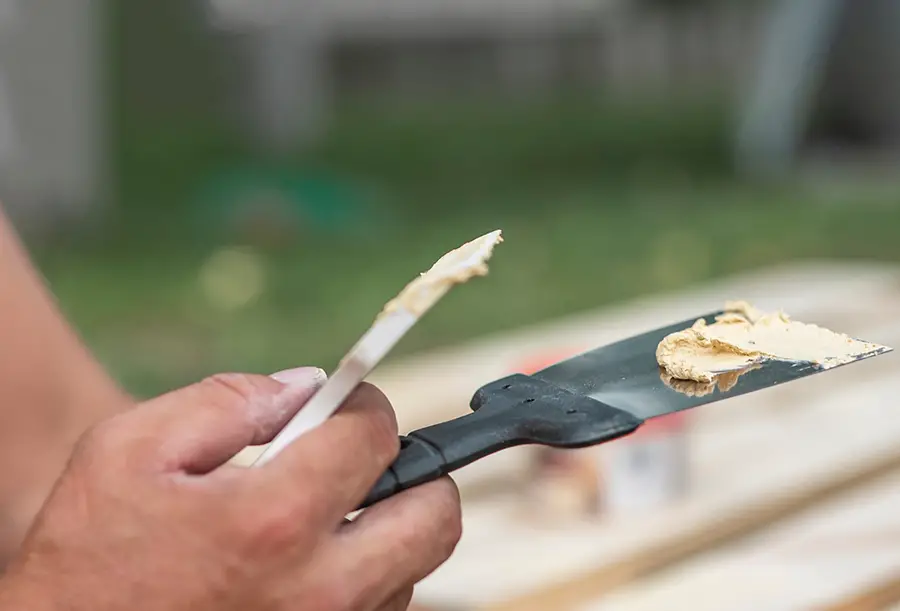
Leather fillers are available in different colors and textures to match your couch’s original look. Here’s how to do it:
- Clean the damaged area with rubbing alcohol and let it dry.
- Apply the filler using a spatula or putty knife, making sure that it fills up all cracks and holes.
- Smooth out any excess filler with sandpaper until level with surrounding areas.
- Let the repair dry completely before proceeding.
Once dried, you can apply color-matching paint over the repaired area for an even finish that blends seamlessly into your sofa’s surface.
Sealing Rips and Tears
Sealing helps to protect the repair from further damage and gives it a more natural look. To do this, apply a thin layer of sealer over the repaired area using a small brush or sponge.
Make sure that you use an appropriate sealer for faux leather material. You can find these at most hardware stores or online retailers specializing in furniture repair supplies.
Allow the sealer to dry completely before applying another coat if necessary. Depending on how deep your tear was, you may need several layers of sealant for complete coverage.
After sealing is done, let everything dry overnight before using your couch again.
Color Matching and Blending
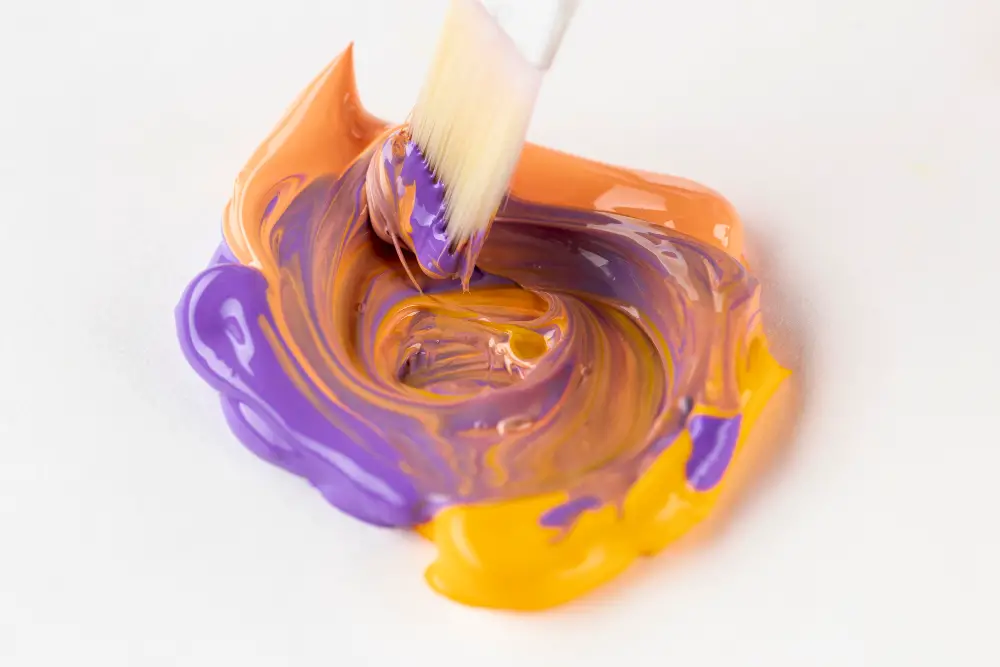
Color matching is essential for a seamless repair job. You don’t want to end up with an obvious patch on your couch that stands out like a sore thumb.
To match the color of your fake leather couch, start by identifying its base shade. Most synthetic leathers come in shades of black, brown or white; however, some may have unique colors such as red or blue.
You can use either acrylic paint or dye to match the base shade of your faux leather sofa. Mix small amounts until you achieve an exact match with patience and precision.
Next comes blending – this step involves feathering out any hard edges around where you made repairs so that they are less noticeable when viewed from different angles under various lighting conditions. Blending requires using sandpaper gently over areas surrounding where repairs were made until there is no visible line between them and their surroundings anymore.
Texturing the Repair

This step is crucial in making sure that the repair blends seamlessly with the rest of your couch. To do this, you’ll need a textured paper or cloth and some rubbing alcohol.
Firstly, clean around the repaired area using rubbing alcohol to remove any dirt or debris that may be present on its surface. Then take a piece of textured paper or cloth and place it over your newly-repaired section.
Next, use a heat gun (or hairdryer) on low heat setting to warm up both surfaces for about 30 seconds before pressing them together firmly until they bond completely.
Let everything cool down for several minutes before removing any excess adhesive from around edges with scissors if necessary.
Apply Protective Finish
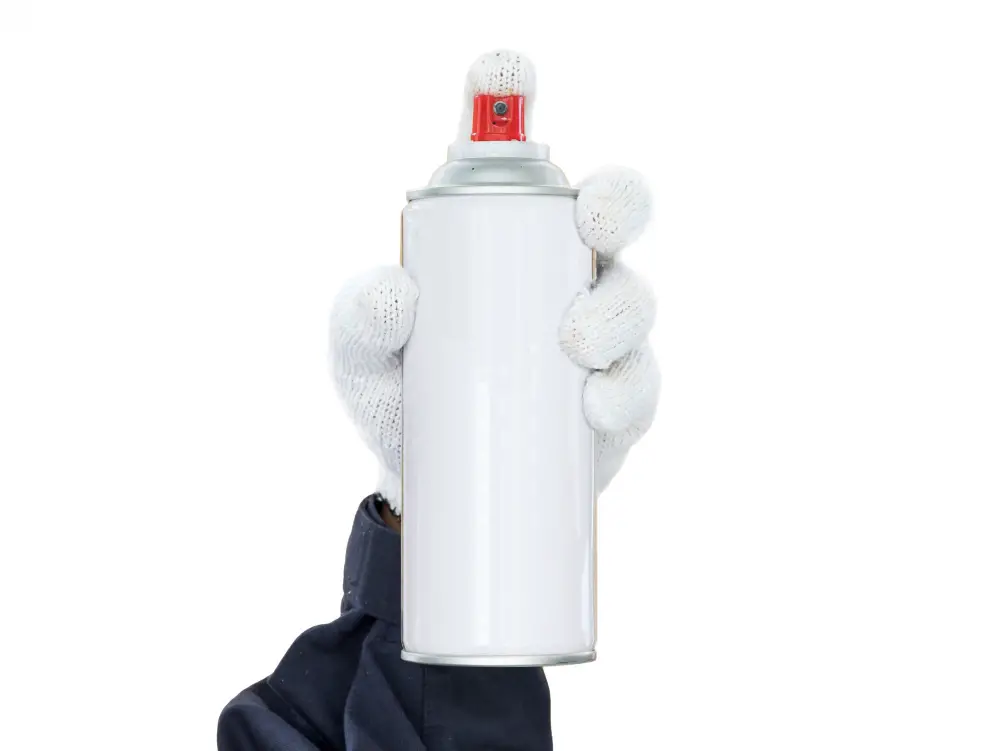
A clear coat of sealant can provide an extra layer of protection against scratches and spills. You can use a spray-on or brush-on sealant depending on the size and shape of your couch.
Before applying the protective finish, make sure that the repair area is completely dry and free from any dust or debris. Follow the manufacturer’s instructions for application carefully, ensuring that you cover all areas evenly.
Allow sufficient time for drying before using your faux leather couch again. Once dried up, test out its durability by rubbing gently with a soft cloth; if there are no marks left behind then it’s good to go!
Maintaining Fake Leather Couch

Here are some tips for keeping your couch looking great:
1. Clean regularly: Wipe down the surface of your faux leather couch with a damp cloth at least once a week to remove dust and dirt.
2. Avoid harsh chemicals: Don’t use abrasive cleaners or solvents on your fake leather as they can cause damage.
3. Keep out of direct sunlight: Direct sunlight can fade and dry out faux leather, so keep your furniture away from windows or use curtains or blinds to block the sun’s rays.
4. Use protective covers: If you have pets that like to scratch furniture, consider using protective covers on high-use areas such as armrests and seat cushions.
5. Condition periodically: Faux leather needs conditioning just like real leather does – apply a conditioner specifically designed for synthetic materials every six months or so.
Conditioning the Faux Leather
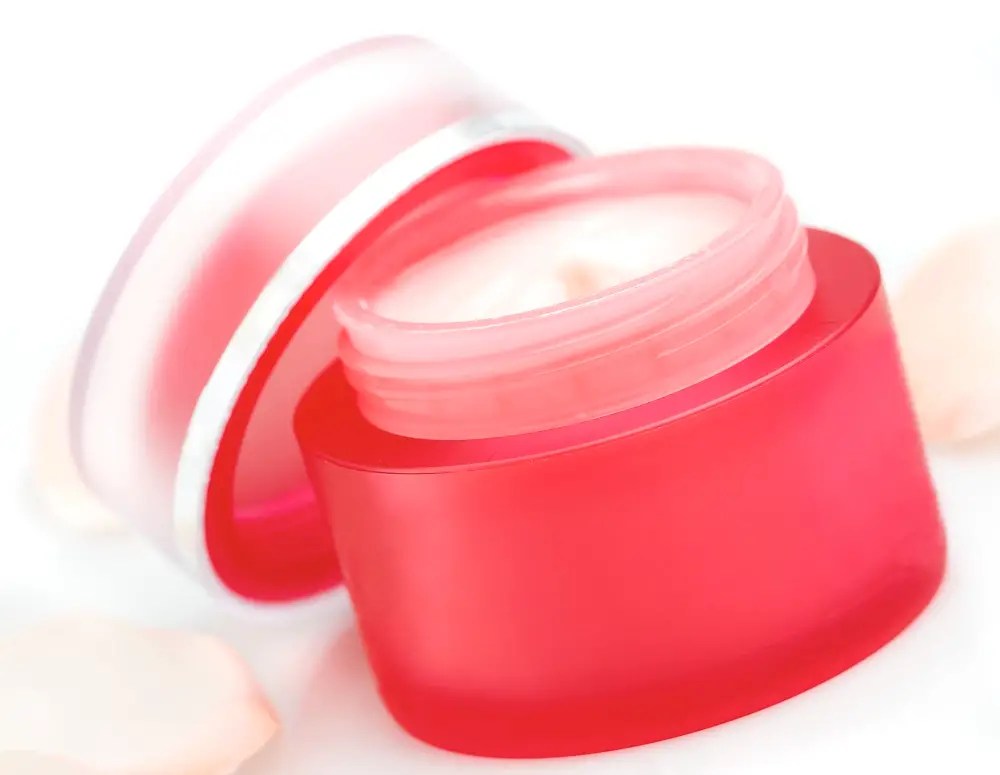
Conditioning is an essential step that helps to prevent future damage and keeps the material looking its best. There are many products available on the market specifically designed for conditioning faux leather furniture.
To condition your couch, start by cleaning it thoroughly with a damp cloth and mild soap. Once dry, apply a small amount of conditioner onto a clean cloth and rub gently into the surface of the faux leather using circular motions.
Be sure to follow any instructions provided by your chosen product carefully as some may require multiple applications or specific drying times before use.
Preventing Future Damage
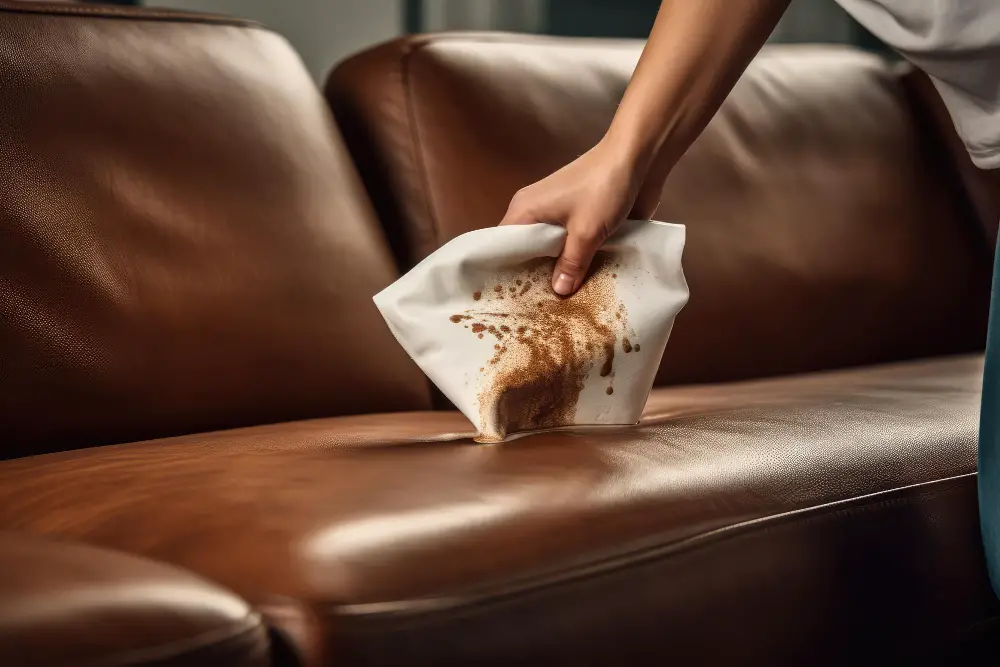
One of the easiest ways to do this is by keeping your couch out of direct sunlight and away from heat sources like radiators or fireplaces. Exposure to these elements can cause the material on your couch to dry out and crack.
Another way you can protect your faux leather furniture is by using a protective spray or conditioner specifically designed for synthetic materials. These products help keep the surface supple and moisturized, preventing cracks from forming.
It’s also essential that you clean up spills as soon as they happen, especially if they’re acidic substances like coffee or wine. Use a damp cloth with mild soap and water solution instead of harsh chemicals that could damage the surface further.
Tips for Choosing Quality Fake Leather
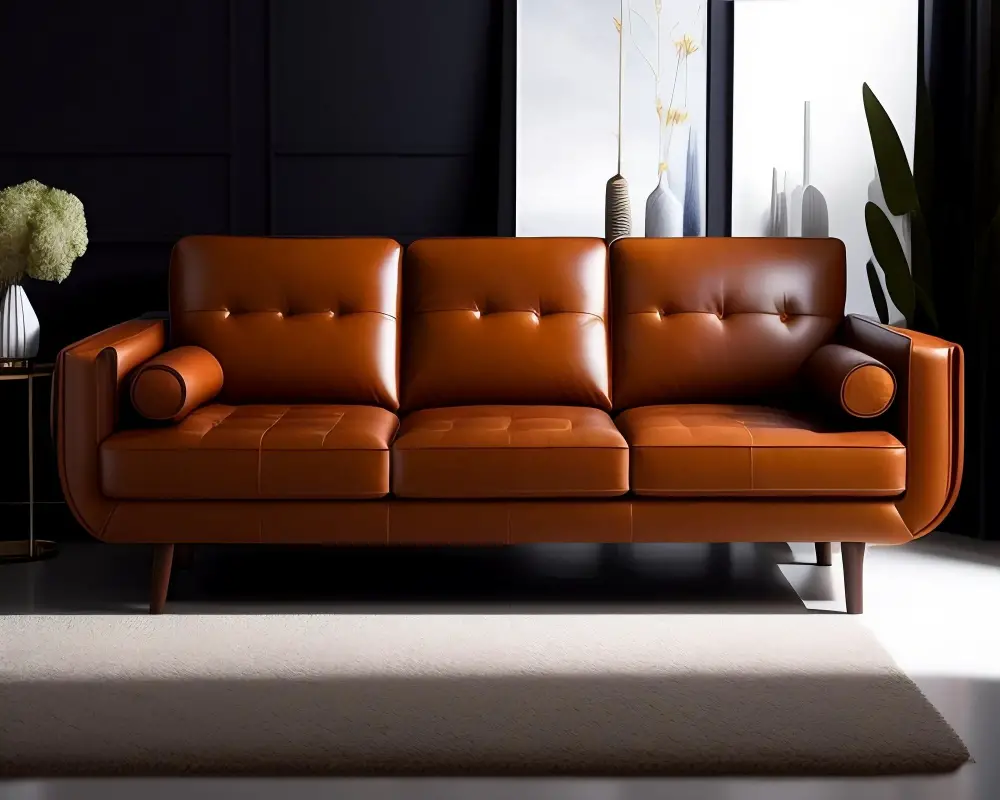
Here are some tips to help you make the right choice:
1. Look for high-quality synthetic materials: Not all faux leather is created equal.
Choose a material that looks and feels like real leather.
2. Check the durability rating: The higher the rating, the more durable your couch will be.
3. Consider color options: Some colors may fade or wear faster than others, so choose wisely.
4. Read reviews from other buyers: See what others have experienced with similar products before making your purchase.
5. Stick with reputable brands and retailers: You’re more likely to find quality products from well-known brands and trusted retailers.
Know When to Replace or Hire a Professional
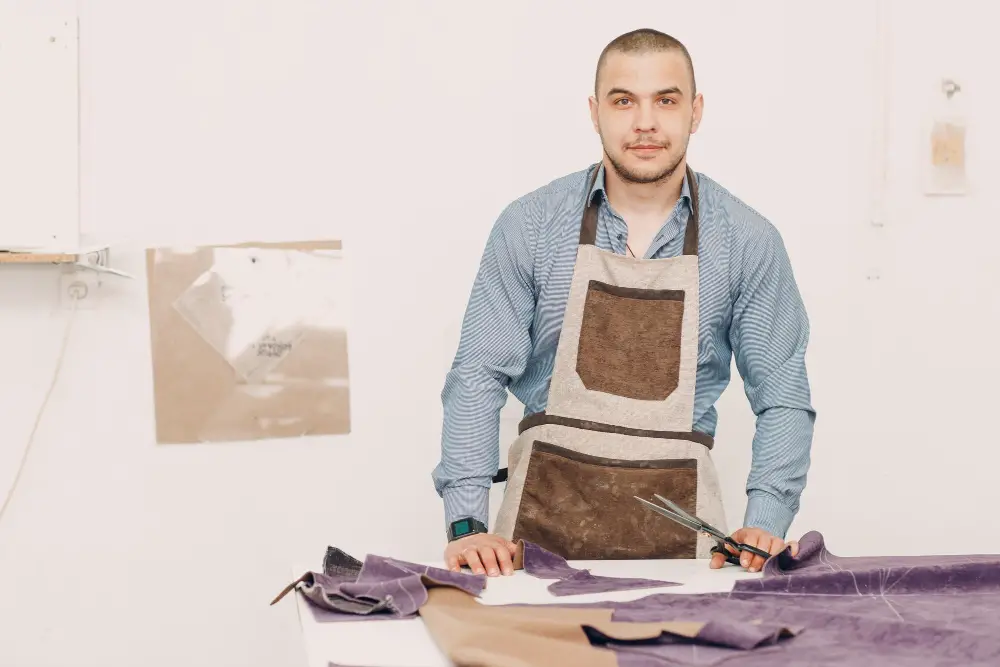
If your couch has extensive damage that cannot be repaired with DIY methods, such as large tears or deep scratches, it may be time to consider replacing the piece altogether.
If you’re not confident in your repair skills or don’t have the necessary tools and materials on hand, hiring a professional may be your best bet. A skilled upholsterer can assess the damage and provide recommendations for repairs that will restore your faux leather couch to its former glory.
It’s also important to keep in mind that synthetic leather sofas have varying lifespans depending on their quality.
How Long Should a Synthetic Leather Sofa Last?

The lifespan of a synthetic leather couch can vary depending on several factors such as usage frequency and quality of the material.
On average, a well-maintained fake leather couch can last up to 5-7 years before showing signs of wear and tear. With proper care such as regular cleaning and conditioning with appropriate products like vinyl conditioners or saddle soap that are specifically designed for faux leathers; you may be able to extend its life by another couple of years.
It’s important to note that not all synthetic leathers are created equal. Some lower-quality materials may start peeling or cracking after just one year while others made from high-grade polyurethane (PU) can last longer than seven years if properly maintained.
How long your fake leather sofa lasts depends on various factors including maintenance practices and quality of material used in manufacturing it. By following proper care instructions outlined in this article you will be able to prolong the life span significantly beyond what would have been possible without them!
FAQ
Can faux leather be repaired?
Yes, faux leather can be repaired, but repairs are discouraged due to the material’s instability and poor adhesion of new coatings.
How do you fix faux leather peeling?
To fix faux leather peeling, apply a layer of high-gloss finish leather paint over the peeling section, let it dry, and then apply a high-gloss finish, allowing 30 minutes for it to dry.
How do you fix a ripped faux leather couch?
To fix a ripped faux leather couch, apply a flexible glue to the back of the faux leather using a toothpick, coating both sides of the tear evenly.
What are the best techniques to restore faded faux leather on a couch?
The best techniques to restore faded faux leather on a couch include cleaning the surface with a mild solution, applying faux leather recoloring balm, and finishing with a conditioner to protect and maintain color.
Are there any specific faux leather repair kits available for fixing scratches and cracks?
Yes, specific faux leather repair kits are available for fixing scratches and cracks in a variety of colors and finishes.
How do you prevent future damages and maintain the longevity of a faux leather couch?
To prevent future damages and maintain the longevity of a faux leather couch, regularly clean using a mild soap solution, avoid direct sunlight, and condition periodically.
